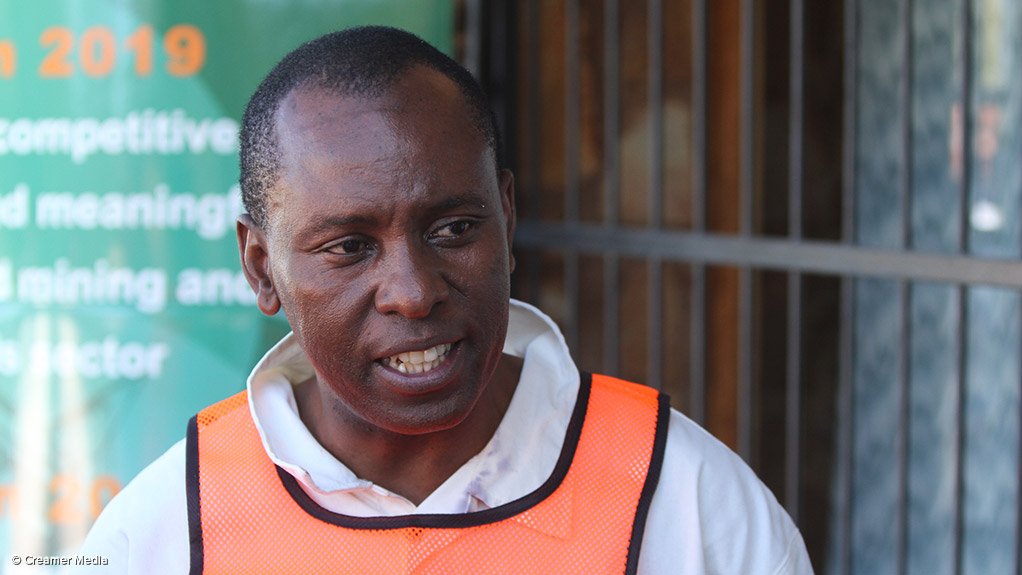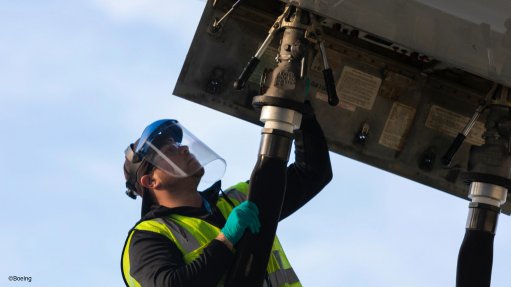Boost Africa’s geoscientific knowledge, urges Zwane
CAPE TOWN (miningweekly.com) – Mineral Resources Minister Mosebenzi Zwane has called on delegates to the thirty-fifth International Geological Congress (IGC) to rechannel their efforts into development on the African continent, which is lagging in terms of geoscientific knowledge.
“On average, expenditure in the generation of geoscientific knowledge is $65/km2 in developed jurisdictions. However, Africa’s expenditure remains below $5/km2 and declining,” Zwane said.
He pointed out that Africa lost more than $50-billion a year through base erosion and profit shifting, known as transfer pricing.
“Implementation of appropriate technology for quality control and assurance on mineral exports is urgent to curb this practice that grossly undermines the socioeconomic development imperatives of affected nations,” said Zwane.
He said it was both “untenable and unjustifiable” to sustain a structurally flawed economic model that placed the African continent at the bottom quartile of development, despite its natural resources endowment spanning land, minerals and upstream petroleum.
The Minister called on delegates to emerge at the end of the conference with a developmentally focused programme of action, with a bias towards the African continent.
The IGC, which is being held in South Africa for the first time since 1929, has brought together several thousand delegates who are discussing subjects ranging from planetary geology and mining to climate change.
Zwane called on geoscientists to expand their work in developing techniques such as electrical resistivity tomography to mitigate the risks of an unpredictable fall of ground, particularly in shallow mines in South Africa and across the continent.
He said the government, together with business and organised labour, had made great progress in reducing geo-hazards associated with deep mining.
Since South Africa’s Mine Health and Safety Act was introduced in 1996, the number of mine deaths had dropped from well over 800 a year to below 100. Zwane said South Africa featured in the top quartile of the mine safety record, compared to peer mining jurisdictions in the world, but was committed to working towards zero harm in mining.
He said predictive techniques for seismic activity at a localised scale would significantly boost the ability to respond appropriately to an impending incident at a mine.
Zwane said it was fitting that the geological community had returned to the African continent following an absence of 64 years.
He said the 1929 conference catalysed advancement of the profession resulting in a significant improvement and a better understanding of the country and regional geological prowess.
“This geology is characterised by the archaean rocks of the Barberton greenstone belt, the 300-km-wide Vredefort Dome as the largest verified impact crater, the relics of glacial tills in the Northern Cape, the rolling hills of the Drakensburg mountains, the Kalahari desert spanning Botswana and Namibia, and the Great Dyke of Zimbabwe.”
He said South Africa was a source of more than a third of the world’s gold, most of it emanating from the ‘reservoir’ of gold, the Wits basin, which has been mined for well over a century and is currently being mined at depths of more than 4 000 m.
Exxaro Resources CEO Mxolisi Mgojo told delegates at the IGC that geoscientists were the real pioneers of modern society.
He said technology would be key in future.
“Technology becomes the bedrock of things to come. Exxaro is looking at building technology platforms based on big data, nanotechnology and the internet of things (IoT) – to do things at a rapid pace never done before.”
“Geoscience is standing on the edge of an immense opportunity.”
The IGC, which received more than 5 000 abstracts for the congress, said part of the scientific programme of the thirty-fifth IGC, as well as many of the field trips, had been designed to provide comprehensive reviews, updates and information about the progress made by the geosciences in Africa since the 1929 congress.
Comments
Press Office
Announcements
What's On
Subscribe to improve your user experience...
Option 1 (equivalent of R125 a month):
Receive a weekly copy of Creamer Media's Engineering News & Mining Weekly magazine
(print copy for those in South Africa and e-magazine for those outside of South Africa)
Receive daily email newsletters
Access to full search results
Access archive of magazine back copies
Access to Projects in Progress
Access to ONE Research Report of your choice in PDF format
Option 2 (equivalent of R375 a month):
All benefits from Option 1
PLUS
Access to Creamer Media's Research Channel Africa for ALL Research Reports, in PDF format, on various industrial and mining sectors
including Electricity; Water; Energy Transition; Hydrogen; Roads, Rail and Ports; Coal; Gold; Platinum; Battery Metals; etc.
Already a subscriber?
Forgotten your password?
Receive weekly copy of Creamer Media's Engineering News & Mining Weekly magazine (print copy for those in South Africa and e-magazine for those outside of South Africa)
➕
Recieve daily email newsletters
➕
Access to full search results
➕
Access archive of magazine back copies
➕
Access to Projects in Progress
➕
Access to ONE Research Report of your choice in PDF format
RESEARCH CHANNEL AFRICA
R4500 (equivalent of R375 a month)
SUBSCRIBEAll benefits from Option 1
➕
Access to Creamer Media's Research Channel Africa for ALL Research Reports on various industrial and mining sectors, in PDF format, including on:
Electricity
➕
Water
➕
Energy Transition
➕
Hydrogen
➕
Roads, Rail and Ports
➕
Coal
➕
Gold
➕
Platinum
➕
Battery Metals
➕
etc.
Receive all benefits from Option 1 or Option 2 delivered to numerous people at your company
➕
Multiple User names and Passwords for simultaneous log-ins
➕
Intranet integration access to all in your organisation





















